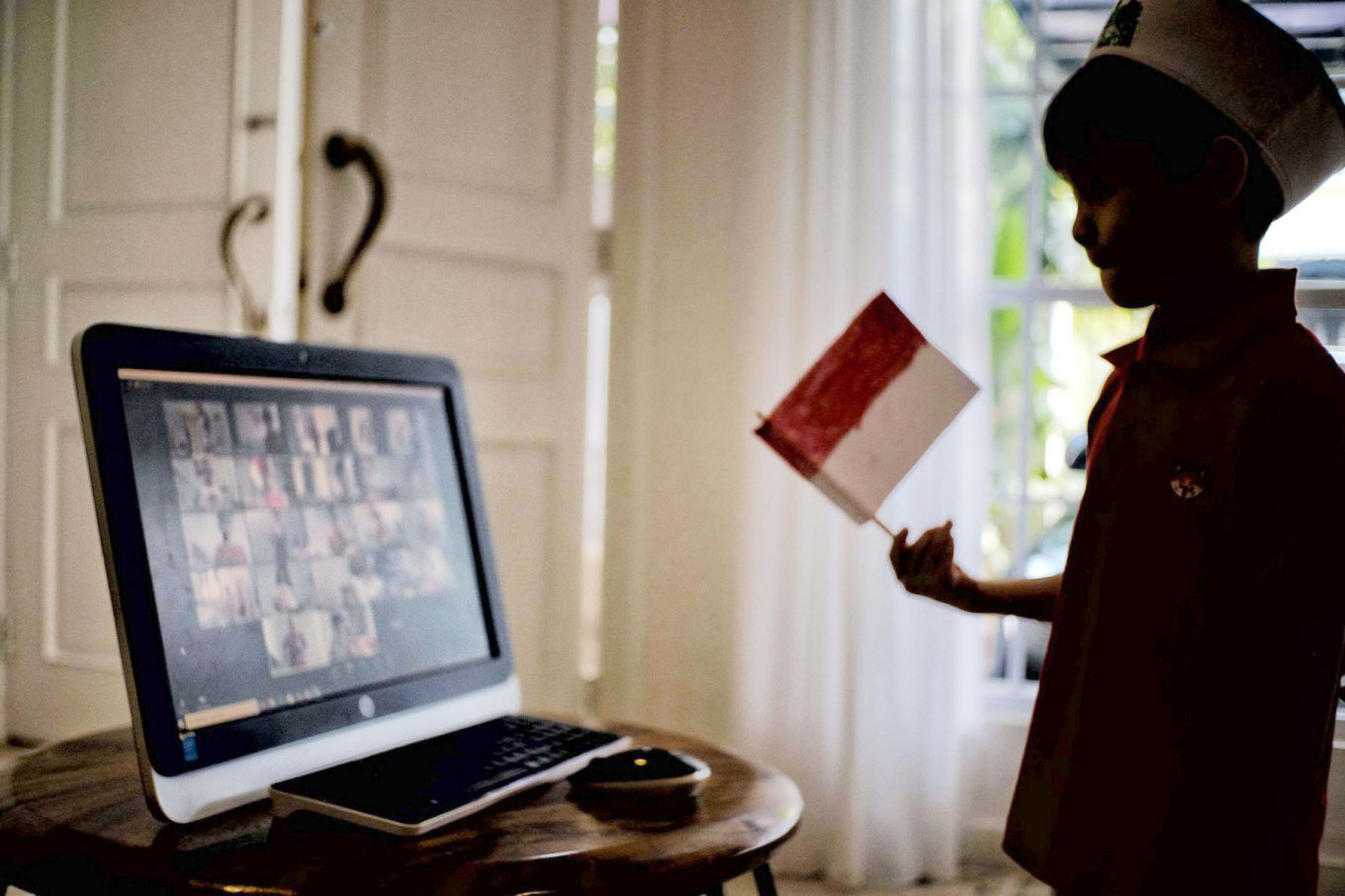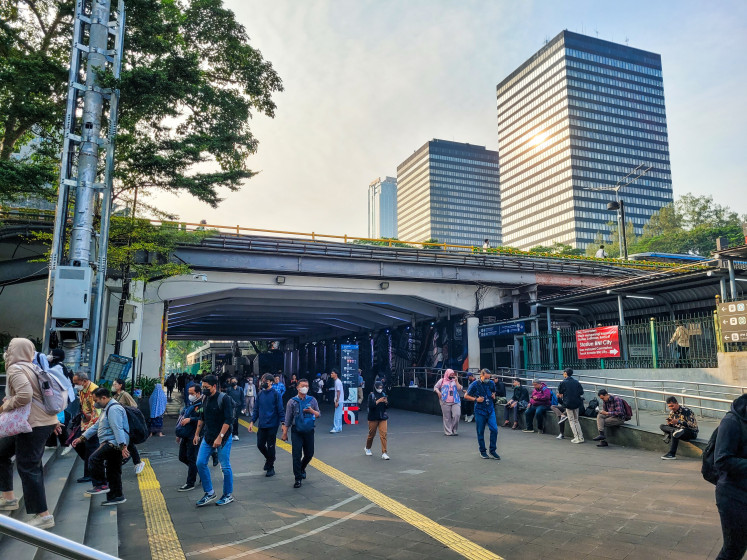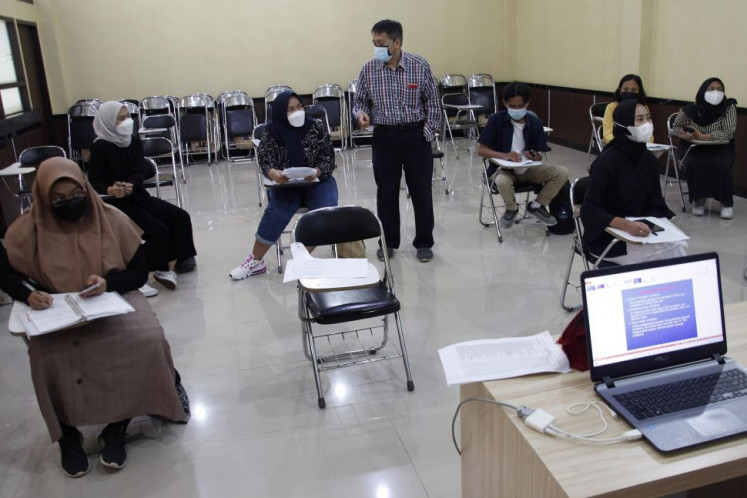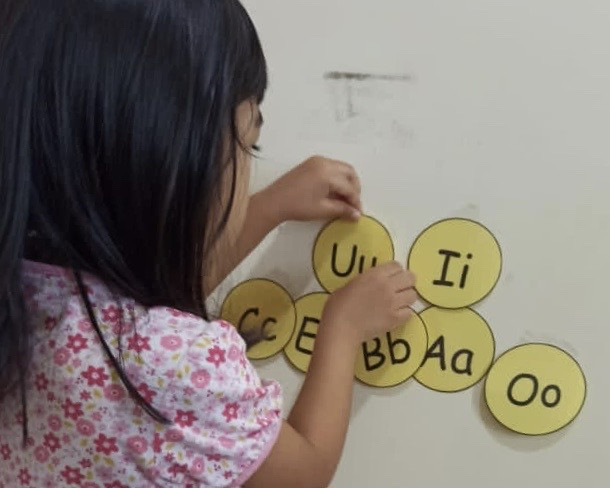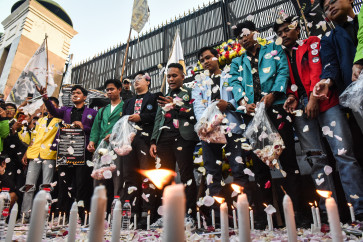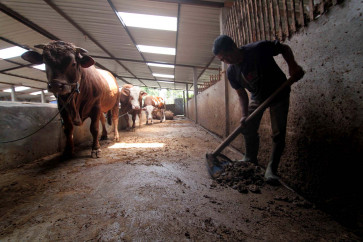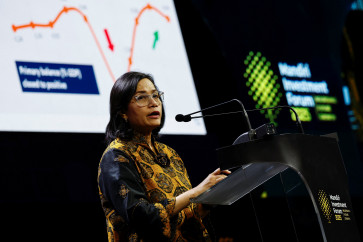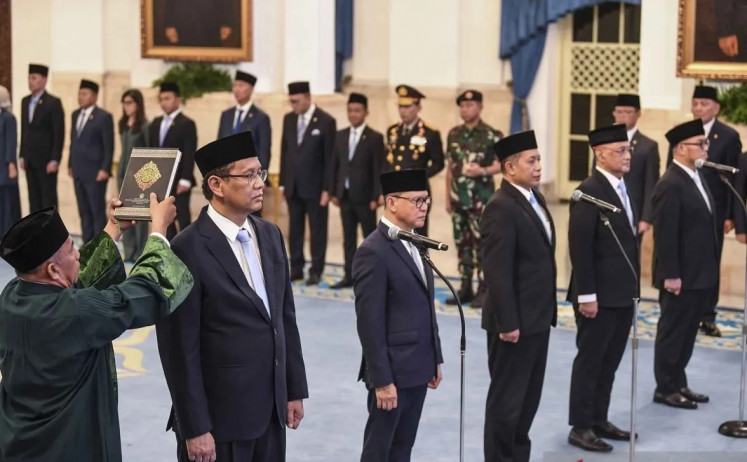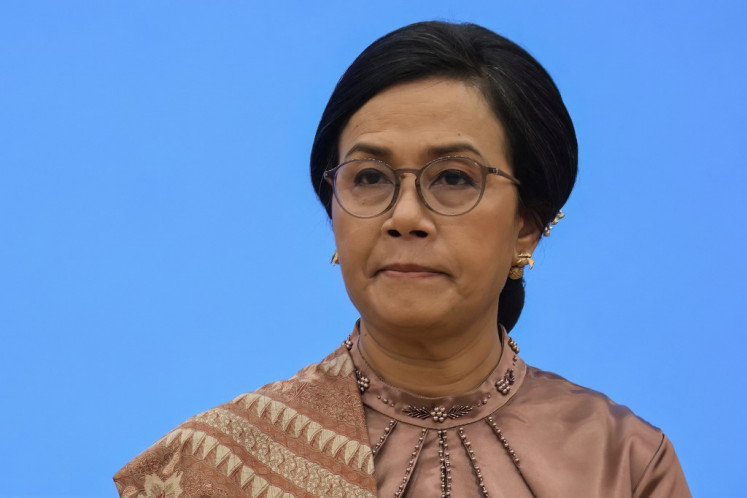Popular Reads
Top Results
Can't find what you're looking for?
View all search resultsPopular Reads
Top Results
Can't find what you're looking for?
View all search resultsConfused about back-to-school? Here's what we've learned so far
Inconsistent messaging, education inequity and varying views have left parents confused about what they can expect when schools reopen come July. Here's what The Jakarta Post has learned about the government's "back to school" plans from speaking with school administrators.
Change text size
Gift Premium Articles
to Anyone
A
s Indonesia looks to reopening schools in most provinces as the new academic year commences on July 13, parents are feeling either eager or wary about sending their children back to physical classrooms.
Their confusion is only natural. The lack of cohesive, consistent information as the days count down has made it difficult to truly understand how in-class learning will work so they can make the best decisions.
And it isn't just parents that are still trying to figure things out.
As The Jakarta Post spoke to school administrators, it became clear that many schools are still working out the kinks. Sluggish communication, complicated bureaucracy, simple carelessness and indecisiveness, and a culture of passing off responsibilities between government sectors, and even in some schools, has resulted in a bewildering hodgepodge just a month ahead of the new school year.
On June 7, President Joko “Jokowi” Widodo called on schools to provide in-person classes for only two hours on two days in a single week, and at 25 percent of normal capacity. This was even stricter than the education ministry’s previous regulation that allowed a maximum capacity of 50 percent.
Amid the policy flip-flop, the takeaway point remains the same: implementation is up to each individual school.
Here’s what we’ve learned from speaking to principals and teachers at schools across the archipelago, with the caveat that everything’s open to change.
How will in-class learning actually work?
Based on the government’s classroom capacity guidelines, some students will attend class in person while others learn at home under a rotation system, so everyone gets to go to school on certain days.
But how the system is applied depends on the school. One school might divide classes equally per grade level, while another might give more in-class time for ninth and 12th graders. The rotation schedule and student slots will also depend on how many parents agree to letting their children go to school.
How will online learners take part in hybrid learning?
Whether it’s their turn on the roster or because they’ve opted to not attend classes physically, students who are learning from home will join their classes by video call and other online means, just as they have done over the past year or so.
Hybrid or blended learning, which combines both offline and online learning, means that teachers will run both learning modes simultaneously.
“We have prepared computers in each classroom for Zoom [classes] so the students at home can also follow what is being taught in class,” Suparno Sastro, the senior high school principal of Labschool Jakarta in Rawamangun, East Jakarta, told the Post on June 4 via Zoom.
“That is the hard part, because after all, this is something new that we will have to manage,” he added.
John (not his real name), a principal of an international school in Jakarta who requested anonymity, shared Suparno’s concerns.
“Dividing [the teachers’] focus into two is not easy. We have to be creative,” he told the Post on June 4 in a Zoom meeting, adding that not all schools had the facilities to support hybrid learning. “I pity the [older] teachers who are slow on technology, especially.”
He added that the officials he had spoken to were less than sympathetic toward parents who still refused to let their children return to school. According to him, these officials insinuated that these parents were to blame if an at-home student had trouble following the new learning system and fell behind.
What if schools or students aren’t equipped for hybrid learning?
School representatives say that they will try to mix things up in such cases, such as giving the students take-home materials and assignments just as they’ve done during the school closure. Some schools, like SMAN 1 Soreang, a senior high school in Bandung, West Java, are setting up a special area at the school to provide facilities and internet access for students experiencing problems with accessing online learning materials.
What’s the worst-case scenario?
Some schools will have no choice but to return to full offline learning mode.
Budi Irwanto, who teaches Indonesian language classes at Yapis Fakfak vocational school in Fakfak regency, West Papua, said the school had been open since the final semester of 2020 because parents couldn’t facilitate at-home learning.
“In eastern Indonesia, people are generally of the middle to lower income [bracket],” Budi told the Post during a WhatsApp call on June 8.
He explained that since the majority of parents lacked the necessary equipment for online learning, they asked for permission from the local COVID-19 task force to allow the vocational school to resume in-class learning.
“Here, Android [phones] are a luxury,” Budi said.
Learning by trial: Students try out a physically distanced classroom seating arrangement at 11 March University (UNS) in Surakarta, Central Java, during UNS' offline learning trial in April 2021. (Antara/Maulana Surya)Isn’t there government funding for online learning?
Yes, a subsidy for mobile data packages that has helped students across the country. But many schools and students don’t have the actual devices they need for learning online.
According to the 2020 Education Statistics report of Statistics Indonesia (BPS), mobile internet penetration among students in rural areas is only half the share of students in urban areas.
John suggested that mismanagement at some schools meant that the School Operational Assistance (BOS), the government fund for purchasing the necessary equipment allocated to public schools, was not used to fulfill its intended purpose. He added that the BOS allocation per school should have been more than enough to purchase the necessary equipment to facilitate the government’s hybrid learning policy.
What are the health protocols for offline learning?
The schools green-lighted for reopening in July have been checked for health and safety compliance by a COVID-19 inspection team. This means that these schools have installed the required sanitation and hygiene measures, including hand sanitizers, handwashing facilities and dividers between individual classroom seats.
Students must also wear face masks at all times, although some schools have prepared a supply of masks for students who forget to bring their own.
Each school has also made arrangements to avoid potential crowding on the school grounds and in school buildings, such as at entrance and exit points, as well as other areas where students and parents tend to congregate.
“We have arranged it so students still keep their distance as they go home,” H. Mujib, the principal of SMAN 1 Giri Taruna Bangsa senior high school in Banyuwangi, East Java, told the Post on June 5.
What about school breaks or sports activities?
Sorry, there won’t be any. Some schools have even decided to restrict students from going to the toilet unless it is urgent. This is only possible because of the two-hour school day restriction.
A student completes an online learning assignment at home. While some parents might be feeling relieved about the school reopening in July, others are feeling unable to make the best decision for their children due to mixed messages or unclear information about the plan. (JP/Courtesy of subject)Will there still be orientation for new students?
Yes, but this will also be limited. One school is implementing a two-day orientation week for new students, with the rest of the orientation program provided online.
Have all teachers been vaccinated?
Health Minister Budi Gunadi Sadikin said on June 7 that all teachers must be vaccinated before schools reopen. Most of the schools the Post contacted said that all their teachers had been vaccinated, but others said only some teachers had gotten their shots.
Budi said that only some teachers at Yapis Fakfak vocational school had been vaccinated.
“[Vaccine] distribution is tough, given [our location],” he said.
Meanwhile, the government’s vaccine rollout for teachers has not reached half its target with only a month to go until “back to school”.
“As of today, only 1.5 million [teachers] have been vaccinated. That's about 30 percent of the target of vaccinating 5.6 million teachers and educators," Syaiful Huda, who chairs House of Representatives Commission X overseeing education, said on June 8 as quoted by Kompas.com.
Do students need to be tested for COVID-19 first?
This varies from school to school. Some say that it shouldn’t be necessary, since they had taken health and safety precautions, while others say it would be a good thing but that it might be difficult to enforce. Still other schools are discussing their options.
“We’re still talking with the local government about the ways in which students can bring their rapid test results […] because, looking at the school budget, there’s no way we can afford that on our own,” SMAN 1 Soreang principal Asep Tarbik told the Post on June 7 by a WhatsApp call.
What if parents don’t want their kids back at school?
All schools said that this was the parents’ prerogative, and that all students needed parental permission to physically attend classes.
“We will still accommodate students whose parents do not give them the permission to return to school,” said Suparno of Labschool Jakarta, adding that the bigger issue was teachers having to work within the latest regulation on a two-hour school day.
“Those who live far from school may spend one to two hours getting here, only to [hold classes] for two hours, which is a new problem that [schools] will have to solve,” he told the Post during a follow-up interview on June 8.
Because of the regulation’s dynamic nature, like the pandemic, many details have been left up to school boards to decide.
“How it’s implemented, what the schedule will be like, it’s up to each school. But whether or not a student goes back to school, it’s up to the parents,” said John.
“There are a lot of instructions from [the government], but there are no actual boundaries to it,” he added.

